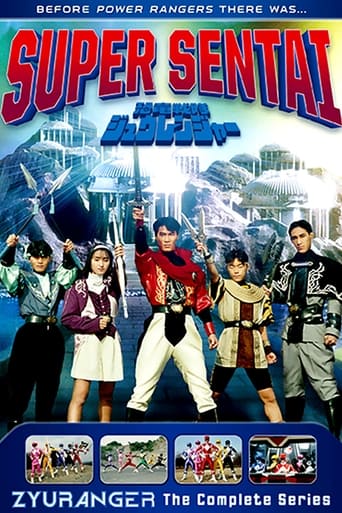
Wild New World (2002)
Journey through the long-vanished corners of prehistoric North America, beginning when man first entered the vast, unspoiled continent some 14,000 years ago, in this appealing BBC documentary. Witness ancient beasts, mammoths, mastodons, giant bears, and sabre-toothed cats, and see the legacies each has passed to their modern successors. Computer animation and digital effects bring to life mammoths, saber-toothed cats, giant ground sloths, short-faced bears, glyptodonts, and a plethora of smaller animals in a lush Ice Age mosaic. Discoveries from sites across America are the basis for the reconstructions. The BBC team behind "Blue Planet" and "Walking with Dinosaurs" now takes you back to an 'early America' beyond imagination. Travel back 14,000 years as humans were first entering the continent, sharing it with ancient beasts.
Country: GB
Language: En | Fr
Runtime: 49
Season 1:

Preserved in the frozen soil of Alaska are clues to an unknown land, where muskoxen and wild horses roarmed alongside woolly mammoths. Enormous American lions harried the families of mammoths, formidable in the defence of their young. The lion were more successful at hunting at bison in the snow but they were no match for the giant short-faced bear.

The first people to experience the splendours of the Grand Canyon would have seen a much greener, richer land. Today it is cougar country but then bizarre ground sloths sheltered in the caves and browsed in the canyons alongside Columbian mammoths. Camels were on the menu for both the first people and the impressive sabre-tooth cat (Smilodon).

America's Deep South is today a haven for the manatees, alligators and waterbirds which abound in its clear, turquoise springs. But when the Ice Age gripped much of the continent, the south was a warm paradise for the earliest human hunters as well as warmth loving wildlife. Tapirs and capybaras grazed in the swamps, dwarfed by the giant ground sloths which towered above them. Sabre-tooth cats came to face to face with skunks and jaguars stalked armoured glyptodonts.

The vast seas of grass on the Great Plains are home to bison, coyotes and prairie dogs today. But previously the area was an American Serengeti, populated by Columbian mammoths (the largest of all mammoths). Here cheetah hunted pronghorn antelope and lions stalked horses and bison. But the most impressive of all the carnivores was the giant short-faced bear.

The final episode shows how the megafauna become extinct, and about how modern animals living on the continent have adapted to the increasing human population and development in North America. The meeting between human and megafauna in North America was a deadly one - most of the large land animals, including all the mammoths and mastodons, horses, camels, giant ground sloths, short-faced bear, and all the big cats (except the cougar) disappeared and the landscape changed dramatically. But some animals learned to flourish in human's environment. Today chimney swifts roost in the towering smokestacks of Portland, kit foxes den in Los Angeles suburbs, moose trample the gardens of Anchorage and red tailed hawks nest in Manhattan.

Mammoths to Manhattan travels through time, from the end of the Ice Age to the present day, to see how North America's ildlife has adapted to living alongside people. Back then, it was a land dominated by giant beasts, today it is a land of towering skyscrapers. The episode starts with the extinction of its biggest mammals, some two thirds of which disappeared soon after the first people arrived.




















